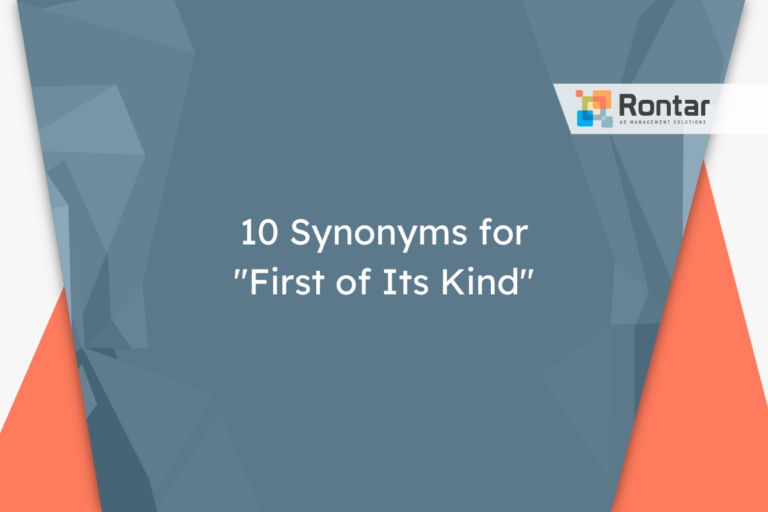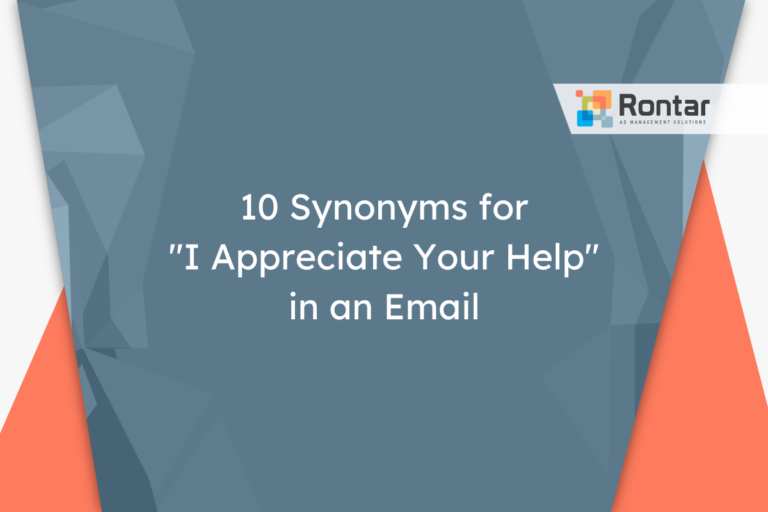10 Other Ways to Say “Please See the Email Below”

When you’re emailing someone, especially at work, it’s important to guide them to important information smoothly. Saying “please see the email below” is a common way to do this, but it can get repetitive.
In this article, we explore ten alternative phrases that can add variety and sometimes more clarity to your emails. Each alternative is broken down to explain when and why it might be a better choice.
Is It Professional to Say “Please See the Email Below”?
When it comes to email communication, using the phrase “please see the email below” is considered both professional and polite. It indicates that you are directing the recipient’s attention to important information contained in a previous email. This phrase is formal, making it suitable for workplace emails or when communicating with someone you do not have a personal relationship with.
This phrase is most useful in situations where you are forwarding an email or need the recipient to review information that was sent previously. It helps ensure that the recipient does not miss vital information. It is especially handy in long email chains where important details may be buried in earlier messages.
Here’s an example of how this phrase can be used in an email:
Dear Emily, I hope this email finds you well. I am reaching out to follow up on the project proposal. Please see the email below for the detailed plan and timelines discussed last week. Let me know if you have any questions or need further clarification. Best regards, Thomas
Pros:
- It is clear and directs the recipient to important information.
- Shows professionalism and maintains formal tone.
- Helps in keeping email communications organized.
Cons:
- It could be seen as impersonal in less formal settings.
- May not be effective if the previous emails are too cluttered or lengthy.
- Assumes the recipient has access to the earlier email, which might not always be the case.
While “please see the email below” is a widely accepted and understood phrase, someone might want to use an alternative phrase to add variety to their communication or to adjust the tone to match the recipient better. For example, in a more casual setting or with someone you have a close professional relationship with, a less formal synonym might feel more appropriate. This encourages clarity without sacrificing professionalism. Additionally, different situations may call for different phrases to guide the recipient’s attention more specifically to the information you want to highlight. Searching for synonyms or alternatives allows you to tailor your communication in a way that’s most effective for the message you are conveying.
10 Other Ways to Say “Please See the Email Below”
Looking for different ways to direct someone’s attention to an earlier email? Here are ten alternatives that keep the message clear and professional.
- Kindly refer to the email underneath.
- I have included more details in the previous email.
- For your reference, please review the below email.
- Please consult the earlier message for more information.
- Refer back to the below correspondence for details.
- Check out the email I sent previously for more insight.
- For further details, see the email attached below.
- Please revisit the below email for clarification.
- I detailed this in the below email for your convenience.
- Please peruse the previous message for specifics.
1. Kindly refer to the email underneath
This alternative is very close in meaning to the original phrase but adds a touch of politeness with the use of “kindly.” It maintains a professional and formal tone. It is a great synonym for the original phrase, setting a respectful and courteous tone in the email.
We recommend using this phrase when you want to emphasize politeness, especially in communications with individuals whom you respect and want to show a level of deference, such as high-level executives or clients.
Here’s an example of how to use it in an email:
Dear Mr. Smith, I hope you are doing well. Regarding our ongoing project, kindly refer to the email underneath for the latest updates. Warm regards, Alex
2. I have included more details in the previous email
This phrase subtly directs the recipient to review an earlier message without being too direct. It’s informal yet remains polite and professional. This option suggests that there are additional details available and encourages the receiver to look back without overtly instructing them to do so.
This alternative works best in situations where you’ve had a previous back-and-forth with the recipient and want to remind them that more information was already provided. It’s suitable when the tone of communication is less formal but still needs to retain professionalism.
Here’s a sample email using this phrase:
Dear Lisa, Just touching base on our earlier discussion about the project timeline. I have included more details in the previous email that might help clarify things further. Best, Jordan
3. For your reference, please review the below email
This alternative is very professional and places emphasis on the act of reviewing the information provided, making it a bit more formal than the original. It positions the email as a resource or reference point, which can be especially useful in detailed or technical exchanges.
Use this phrase when you are pointing to specific details or instructions in the previous messages that you want to ensure are not overlooked. This is particularly effective in email chains with a lot of technical details or when referencing attachments.
Here is an example of how it can be used:
Dear Emily, Following up on our last meeting, for your reference, please review the below email for the compiled data I mentioned. Sincerely, Mark
4. Please consult the earlier message for more information
This phrase suggests a more formal and deliberate action of consulting the provided information. It implies that the earlier message contains necessary and perhaps in-depth information. This phrase maintains a high level of professionalism and is very polite.
It is better suited for situations where the previously sent email contains detailed instructions or information that is crucial for understanding the current communication. It’s also appropriate when referencing formal documents or reports sent earlier.
Here’s an example:
Dear Cara, To ensure full understanding of the process changes, please consult the earlier message for more information. Kind regards, Thomas
5. Refer back to the below correspondence for details
This version adds a bit of formality to the request by using the term “correspondence,” which can make the message feel more professional. It’s polite and implies that the information being sought can be found by looking at the previous emails.
This alternative is particularly useful when you are referring to a specific exchange or when the previous email exchanges have been extensive. It helps direct the recipient back to a particular part of the conversation for clarification or additional details.
Here’s how you could use it:
Dear Alan, Regarding your question about the budget, refer back to the below correspondence for details. Best wishes, Sophie
6. Check out the email I sent previously for more insight
This option is slightly more informal but still polite. It suggests a sense of collaboration by encouraging the recipient to ‘check out’ the previous messages. This phrase is best used in a familiar or less formal setting while maintaining professionalism.
It’s a good fit for communications with team members or colleagues with whom you have an ongoing working relationship. It suggests reviewing the information not just for their benefit but for a deeper understanding of the topic at hand.
A sample usage in an email could be:
Dear Jason, We've made some updates to the project plan. Check out the email I sent previously for more insight into the changes. Thanks, Erica
7. For further details, see the email attached below
This phrase is direct, formal, and professional. It assumes an attachment or includes detailed information in a previous email that is necessary for the recipient to view. It’s a polite way to direct attention to additional resources.
This is well-suited for scenarios where detailed reports, files, or documents were sent in earlier emails and you wish to ensure that these resources are noticed and reviewed by the recipient.
An example of this in action:
Dear Monica, As discussed, for further details, see the email attached below containing the project specifications. Regards, Jake
8. Please revisit the below email for clarification
This option is useful for emphasizing the need for clarity on a certain matter. It is formal, professional, and implies that the previous email contains the clarification needed. It’s polite and direct, ensuring there is no misunderstanding about the necessity of reviewing the previous correspondence.
Opt for this phrase when you need to address misunderstandings or when you believe the recipient might have overlooked key details in the prior email. It’s especially helpful in complex discussions where clarity is paramount.
Using it in an email:
Dear Veronica, To help clear up any confusion regarding our discussion yesterday, please revisit the below email for clarification. Many thanks, Oliver
9. I detailed this in the below email for your convenience
This alternative is considered informal while still being polite. It suggests a friendly tone, indicating that the information was provided in a manner intended to be helpful or convenient for the recipient. The phrase is professional but in a relaxed manner.
It’s most appropriate in communication with colleagues or clients with whom you have a friendly relationship. The use of “for your convenience” suggests that you’re trying to make things easier for the recipient by pointing out where the detailed information can be found.
A sample email might look like:
Dear Ken, In relation to our earlier conversation about the quarterly goals, I detailed this in the below email for your convenience. Cheers, Lindsay
10. Please peruse the previous message for specifics
This phrase is formal and suggests a thorough review of the previous message is needed to understand the specifics. It’s very professional and courteous, urging the recipient to take their time to carefully review the information provided.
This is perfect for instances where detailed analysis or understanding is necessary and you want to make sure the recipient pays close attention to the information provided in earlier messages. It’s particularly effective in formal communications or with new contacts.
Here is how you can incorporate it into an email:
Dear Harrison, Following our conversation on the new policy changes, please peruse the previous message for specifics. Best, Gregory
Final Thoughts
Email communication is a big part of our daily lives, especially in professional settings. Using the same phrase over and over can make your messages feel stale. The alternatives we’ve provided can help you communicate more effectively and with variety. Choosing the right phrase helps ensure your message is clear and received as intended, whether you’re aiming for a tone that’s formal, informal, or just trying to be polite.
Remember, the key to good communication is not just what you say but how you say it. Try using these alternatives in your emails and see the difference it can make in your interactions.






